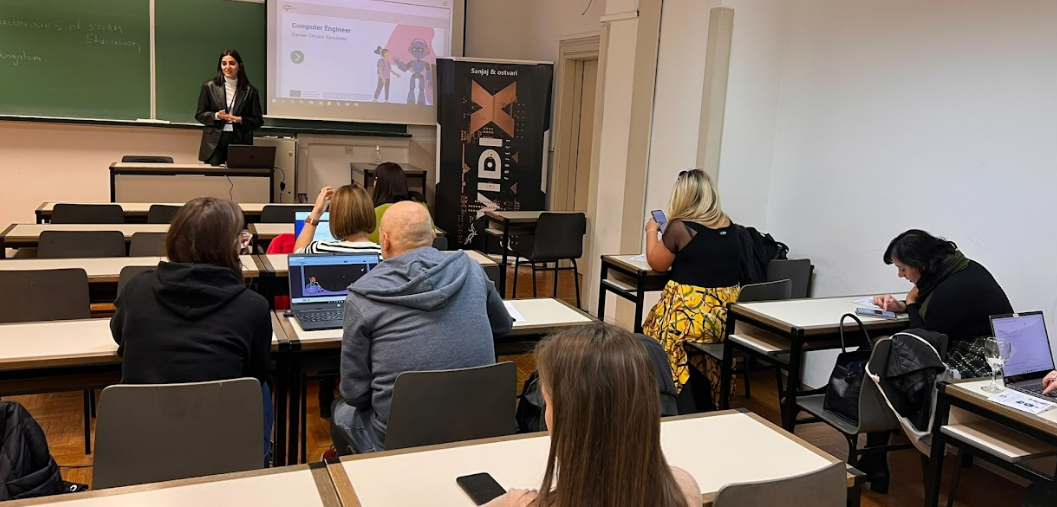Unlocking Knowledge: STEAM Education and Open Educational Resources

Unlocking Knowledge: STEAM Education and Open Educational Resources
In the dynamic landscape of education, the integration of STEAM (Science, Technology, Engineering, Arts, and Mathematics) has become imperative for fostering a comprehensive understanding of the world. This article explores the symbiotic relationship between STEAM education and Open Educational Resources (OERs), shedding light on how the accessibility of knowledge enhances the learning experience.
The Essence of STEAM Education
STEAM education transcends traditional subject boundaries, providing students with a holistic approach that nurtures critical thinking, creativity, and problem-solving skills. As an interdisciplinary framework, STEAM prepares students for the challenges of a rapidly evolving world, emphasizing the interconnectedness of various fields.
The Promise of Open Educational Resources
Open Educational Resources, or OERs, represent a paradigm shift in education. These freely accessible and openly licensed materials hold the promise of democratizing education, making quality learning resources available to students and educators worldwide without financial barriers.
Enhancing Accessibility in STEAM Education
- Breaking Financial Barriers: OERs play a pivotal role in enhancing accessibility to STEAM education. By providing free access to textbooks, lectures, and interactive modules, OERs break down financial barriers, ensuring that students, regardless of economic background, can engage with quality educational materials.
- Global Reach: The digital nature of OERs allows for a global reach. Students from different corners of the world can access the same learning resources, fostering a sense of inclusivity and diversity in the STEAM learning community.
Quality Content for STEAM Learning
One concern often associated with free resources is the compromise on quality. However, OERs for STEAM education are curated with precision, ensuring that the content meets educational standards. Collaborative efforts among educators globally contribute to the development of high-quality, up-to-date materials.
Diverse Learning Modalities through OERs
- Interactive Modules: OERs offer interactive modules that cater to diverse learning styles. From visual learners to those who grasp concepts better through hands-on activities, the versatility of OERs ensures that STEAM education meets the varied needs of students.
- Multilingual Resources: In a globalized world, multilingual resources are crucial. OERs can be adapted and translated to accommodate different languages, making STEAM education accessible to students who may not have English as their primary language.
Teacher Empowerment and Professional Development
Educators play a central role in the effective implementation of STEAM education. OERs empower teachers by providing them with a wealth of resources for lesson planning, project development, and continuous professional development. The collaborative nature of OER platforms allows teachers to share insights and refine their teaching methodologies.
Customization for Localized Learning Environments
- Adapting to Cultural Contexts: OERs can be adapted to suit different cultural contexts. This customization ensures that STEAM education remains relevant and resonates with the lived experiences of students, contributing to a more engaging and meaningful learning journey.
- Flexibility in Curriculum Design: Teachers can leverage OERs to introduce flexibility in curriculum design. They can tailor learning materials to address specific local challenges, incorporate regional examples, and infuse cultural relevance into STEAM education.
Overcoming Technological Barriers
While the digital nature of OERs is advantageous, concerns about technology accessibility arise. However, as technology becomes more ubiquitous, initiatives to bridge the digital divide are gaining momentum. Schools and communities are increasingly adopting technology, making OERs a viable resource for an expanding student population.
Addressing Concerns and Misconceptions
- Quality Assurance Measures: To address concerns about the quality of OERs, platforms often implement rigorous quality assurance measures. These measures include peer reviews, expert evaluations, and continuous updates to ensure that the content aligns with educational standards.
- Licensing and Copyright: OERs operate under open licenses, granting users the permission to use, adapt, and share the materials. Understanding these licenses is essential to dispel misconceptions about copyright issues related to OER usage.
The Future Landscape of STEAM Education
In conclusion, the integration of Open Educational Resources into STEAM education holds immense potential for transforming the educational landscape. The marriage of STEAM and OERs not only increases accessibility but also fosters collaboration, customization, and innovation in the pursuit of knowledge.
Explore more about STEAM education and Open Educational Resources here.



